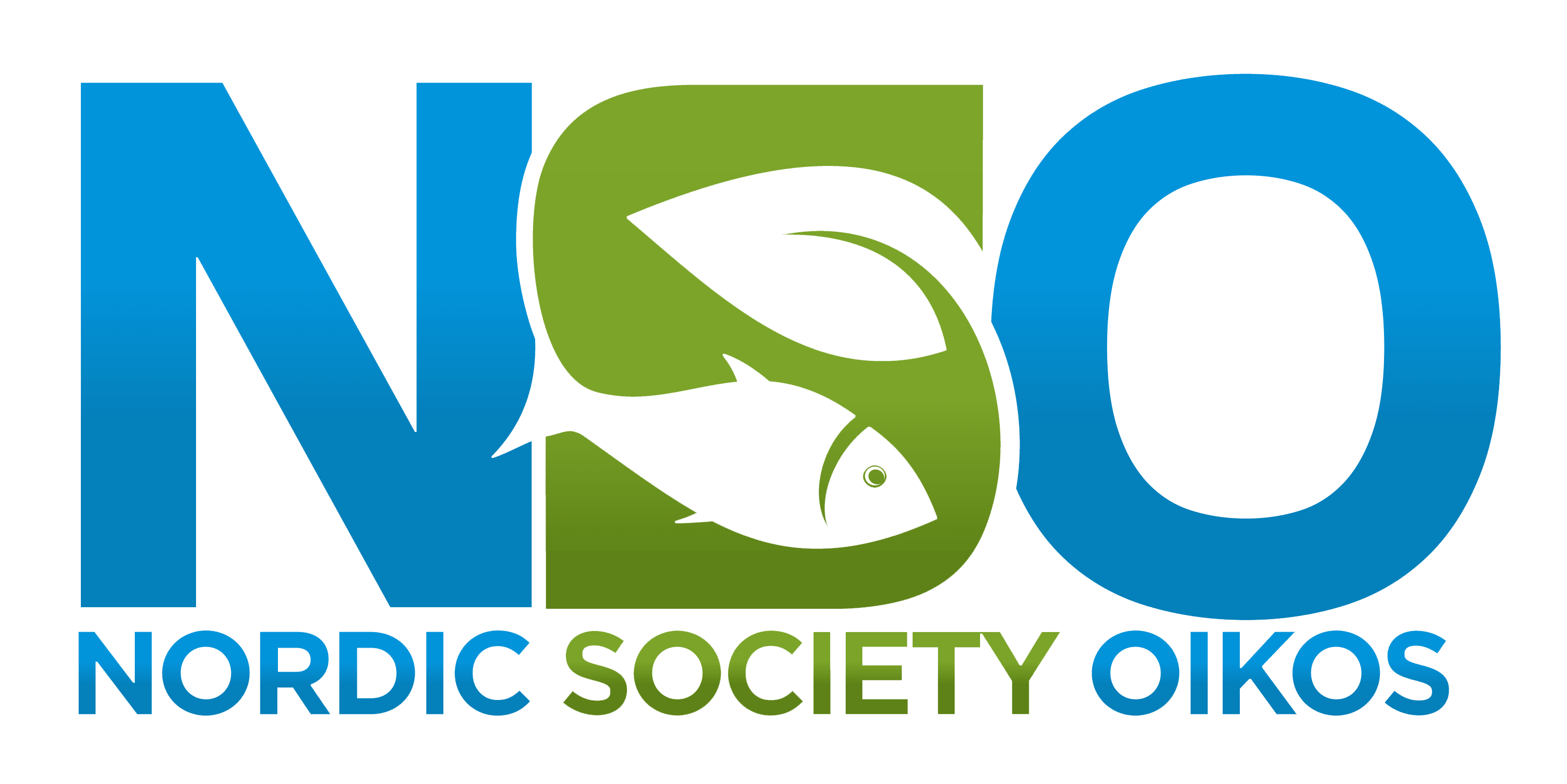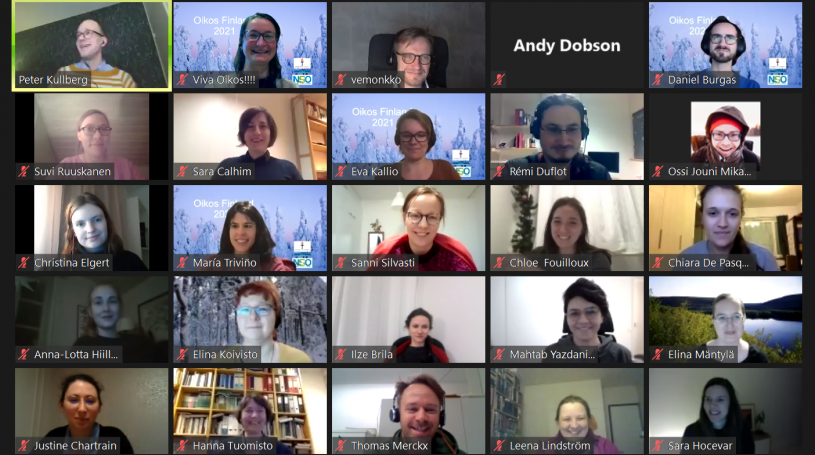Conference Recap: Oikos Finland 2021
Oikos Finland held its virtual meeting on February 1-3, hosted by the University of Jyväskylä, with 195 people participating in the event via an effective pairing of Zoom and Slack.
The title of this year's conference was Ecology and Evolutionary Biology in the Changing World – Solutions? and the theme was reflected in many of the talks and posters. The four plenary speakers included two prominent young researchers from Finland, Patrick Karell and Suvi Ruuskanen, along with two senior researchers Zooming in from abroad. Canadian spatial ecologist Marie-Josée Fortin wrapped up Day 1 with a presentation on ecological networks in dynamic landscapes. Wildlife disease ecologist Andrew Dobson of the United States closed out Day 2 of the conference with a thought-provoking talk on preventing the next pandemic.
The conference also featured 37 standard talks, in eight thematic sessions focusing on biodiversity in cities, reproductive strategies, method in biodiversity conservation, aquatic ecosystems, community responses to climate change, biological interactions, phenological and genetic response to climate change, and disease emergence. Virtual poster sessions allowed participants to peruse 24 posters and have conversations with the poster presenters. PhD Prizes were awarded for 2019 and 2020 to Anna Norberg and Sebastiano de Bona, respectively. Also, a pre-conference workshop of “gRaphics: Data-driven storytelling” had excellent success with 95 participants (and some colorful results).
The local organizing committee of nine people pulled off a smooth conference, despite a recent COVID outbreak in Jyväskylä that added last-minute challenges; only a few members of the local organizing committee could be in the same room. “All preparations went well, although everything was carried out remotely.” said Eva Kallio, chair of the organizing committee. “People took responsibility for the tasks that best suited them.” The committee worked with John Loehr, Vice-Chair of Oikos Finland, to handle aspects of the conference related to the NSO website and membership platform.
“An online conference was of course the only possibility at this time, and enabled us to have a great conference," Kallio said. "However, things that are very simple in live conferences required a lot of planning; for instance, how to handle questions in the most efficient and useful way?” The organizers paired Zoom with another platform for written communication: Slack, through which approximately 1300 messages were exchanged during the conference. “We used Slack for all questions, and the majority of participants joined the conference channel, so we think that was a good decision,” Kallio said.
“I think the outcome was great,” Kallio said. “We had very good quality oral presentation sessions, and everything worked without any major problems and in time. In future I hope that hybrid conferences could be possible, as it would allow people who are not able to travel to join the meeting.”

